The choice of feeding for currants in the spring: how and how to fertilize the bushes for a good harvest
Currant is an unpretentious crop, but it needs fertilizers to get a rich harvest. Some gardeners prepare top dressing on their own, using available tools. Others buy ready-made compounds from garden stores. Which ones are better and how to feed currant bushes for a good harvest - read on.
The content of the article
Spring feeding goals

Mineral and organic fertilizers stimulate shoot development. They strengthen the immune system, heal the root system.
Top dressing ensure the normalization of plant metabolism, which is important for currants at any stage of development. Also protects against diseases, pests, dangerous microorganisms. Gardeners fertilize shrubs in all regions. Proper fertilization guarantees a stable and high yield.
When to feed in spring
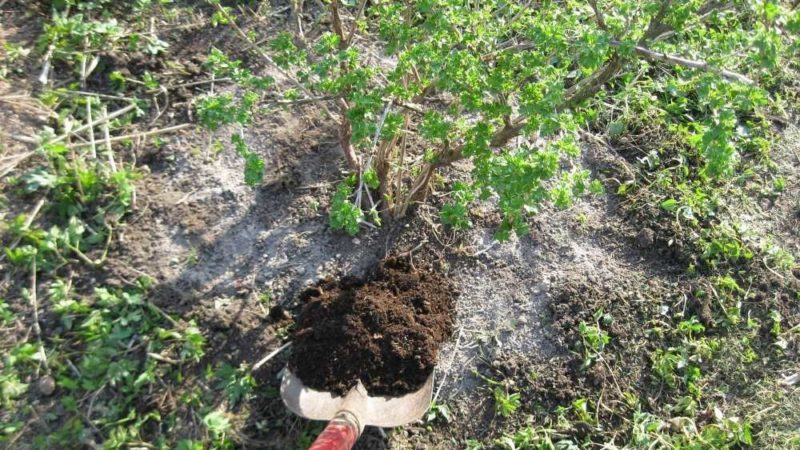
For fertilization, dry and cloudy days are chosen. It is desirable that there is no sun in the sky, as plant burns are possible... Top dressing is applied in the morning or evening. The optimal time for the procedure is mid-April, when the snow will melt from the ground and it will warm up to a temperature of + 8 ° C ... + 12 ° C. However, the term may shift depending on the region.
For example, in the northern regions of Russia it is the end of April or the beginning of May, in the southern regions it is the end of March or the beginning of April. When choosing days, it is advised to pay attention to the weather conditions. You should not feed the plant if there is still a layer of snow on the ground.
Attention! Some gardeners are guided by the lunar sowing calendar when choosing a day for fertilizing. The right time is for the waxing moon. Fertilizers are not advised on the new moon.
How to feed currants in spring
Each fertilizer has a specific function. Organics are responsible for the formation of foliage and shoots, minerals - for the growth of fruits, their appearance and taste. Complex feeding is needed for both at the same time.
Organic fertilizers
The most popular and effective organic fertilizers for currants are manure, mullein and bird droppings:
- Manure contains nitrogen, phosphorus and potassium, which are necessary for currants during the entire growing season. It also contains copper, zinc, iron, molybdenum. For currants, use cow or horse manure. The earth is dug onto a shovel bayonet, 1 sq. m make from 4 to 6 kg. This fertilizer is applied every 2-3 years. This is how long the manure takes for complete decomposition. During these years, it nourishes the soil with vitamins and microelements.

- Compost. Bark, branches, stems, fruit and vegetable waste, straw, sawdust are used to prepare compost. Compost serves not only as fertilizer, but also as organic mulch. It is brought in in early spring, after loosening the soil. One bush takes about 3 liters of fertilizer.
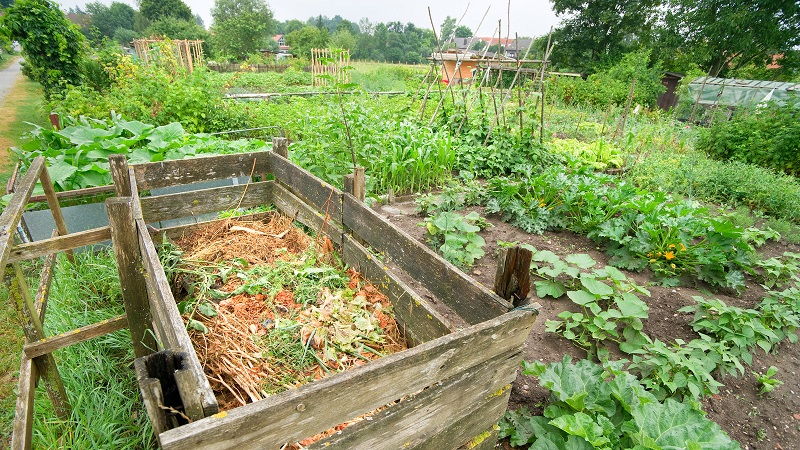
- Bird droppings contains nitrogen, zinc, cobalt, iron, magnesium, sulfur and manganese. It accelerates the ripening of fruits, increases productivity, protects against the appearance of insect pests. For 1.5 liters of water, 100 g of poultry droppings are used. About 1 liter is spent on one bush, the solution is poured under the root.
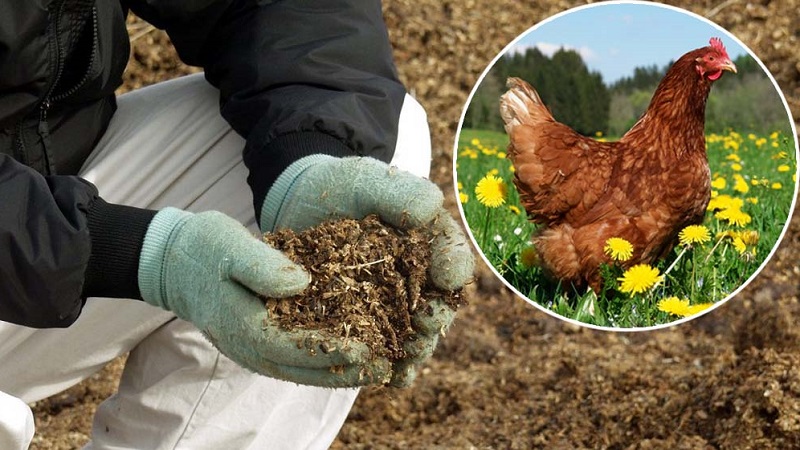
Mineral fertilizers
From mineral fertilizers, summer residents use nitrophoska, potassium sulfate, bone meal, urea. When applying dressings, it is important to remember that some substances are incompatible with each other.
For spring feeding it is recommended to use:
- Nitroammofosk. The fertilizer is easily diluted in water and affordable. Nitroammofosk has a high concentration of nitrogen, potassium and fluorine, it is suitable for feeding young and adult plants. About 50 g of a substance dissolved in 100 ml of water is used per bush. After application, the soil is watered abundantly with warm water - moisture helps the microelements dissolve in the soil faster.
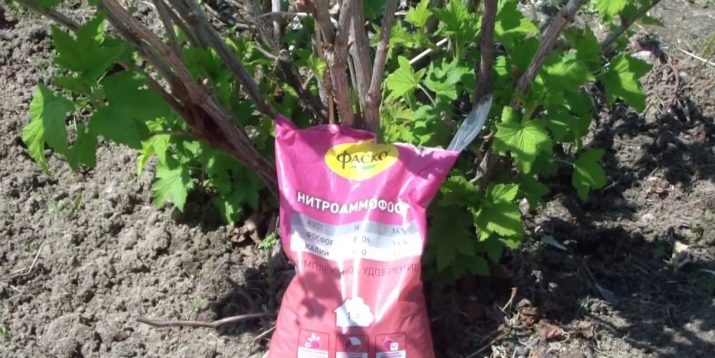
- Superphosphate make in the amount of 20-40 g per bush. It protects currants from fungal and viral diseases, accelerates the flowering and fruiting of the crop. Also, fertilization has a good effect on the taste of the fruit - currant berries become sweeter. And to make the feeding even more nutritious, summer residents mix 30 g of superphosphate and 15 g of potassium salt.
- Urea (urea) contains nitrogen, which helps the plant to wake up after hibernation and gain strength for flowering. One shrub takes 40 g of urea - it is brought under the top layer of the earth at the base of the plant. From the fourth year of the life of the bush, the amount is reduced to 20 g.

Finished purchased fertilizers
Complex feeding is equipped with mineral and organic substances. They are sold in liquid, granular, or powder form. Easy to use most importantly, follow the manufacturer's recommendations.
Gardeners use the Berry Bushes fertilizer for feeding currants... It increases yields by up to 50%, shortens ripening times and improves crop quality. Fertilizers are applied under the bush (50 g each) to a depth of 30-40 cm. The Berry Bushes product contains equal amounts of nitrogen, phosphorus and potassium.
The ready-made mineral fertilizer "Raketa" strengthens the plant's immunity... It is sold in briquettes, in addition to the main elements, it contains zinc, copper, manganese, boron. Enriches the soil and strengthens the currant root system. For one bush, 2-3 briquette pegs are used, which are driven in near the bush. The tool is used from the second year of the bush's life.
Attention! When making ready-made dressings, it is recommended to follow the manufacturer's instructions. The interval between dressings should be at least 2-3 weeks. Experienced gardeners alternate between mineral, organic, complex and folk fertilizers during spring and summer.
Folk recipes
How to fertilize currants with potato peels? Natural raw materials contain starch and glucose, which most fruit bushes love... The cleanings are pre-dried, then buried under the bush. They decompose in the soil, giving some of the nutrients to the soil, and some directly to the currants.
Strengthen the effect will help boiling water, with which plants are watered after fertilization. Folk fertilizer is safe, non-toxic and is actively used by gardeners during spring feeding.

Also, for healthy development and fruiting, an infusion of bread crusts is used. For cooking, take 1 kg of stale bread and a bucket of warm water. The bread is soaked, 50 g of sugar and 50 g of baker's yeast are added.
The mixture is left for 2-3 days in a warm place, then poured under a bush and mulched. Top dressing will enrich the soil with potassium and protect the shrub from rodents and insect pests. This infusion is used to fertilize red and black currants.
Choosing a top dressing for a good harvest
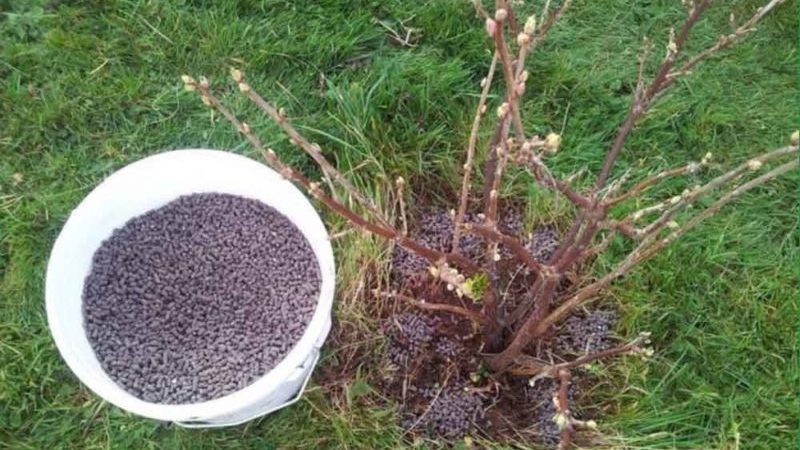
For abundant flowering and the formation of an ovary, gardeners use 10 g of potassium sulfate, previously dissolved in 10 liters of water. In addition to potassium, granules contain sodium, calcium and iron oxide. Fertilizer accumulates in plant cells in the form of ions and normalizes the nutrition process.
Increases plant frost resistance, which is especially important in regions with unstable climatic conditions. Potassium sulfate provokes a fast metabolism, participates in photosynthesis and increases productivity. Top dressing is applied early in the morning before sunrise.
Attention! Lack of potassium provokes the development of diseases.Signs of a lack of an element: yellow deformed leaves, the appearance of brown spots on the shoots. Plant growth stops, the development of the ovary slows down.
How to properly feed

Liquid fertilizers are applied into grooves or holes about 10 cm deep at a distance of 3-4 cm from the shrub. Before the procedure, the bush is watered, no substance is added to dry ground. When using chemical dressings, it is recommended to wear gloves so as not to burn your hands. Also, you cannot exceed the indicated dose or fertilize the currants too often, otherwise it will negatively react to an excess of vitamins and minerals.
Experienced summer residents are advised to avoid contact of liquid root dressings with open parts of the plant - possible burns.
Spring feeding of currants when planting
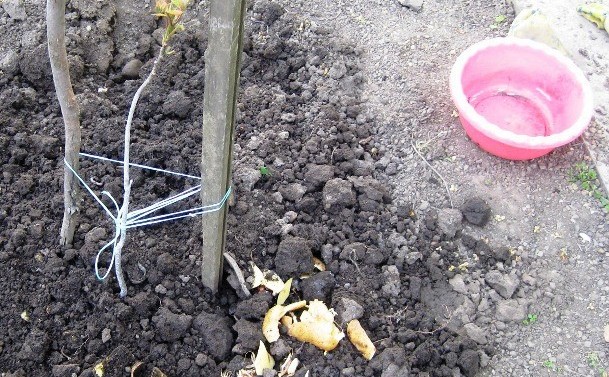
In order for the seedling to take root in the ground faster, gardeners fertilize the pit with a mineral-organic mixture. For 1 sq. m requires 400 g of superphosphate, 100 g of potassium salt and 100 g of manure. The soil is dug onto the shovel handle and fertilizer is applied under each bush.
Before that, it is recommended to sprinkle the planting site with dolomite flour, lime or wood ash - they lower the acidity of the soil.
How to feed before flowering
Before flowering, red and black currants are sprayed with a nutrient solution. For its preparation, mix 2 g of boric acid, 2 g of copper sulfate, 2 g of zinc sulfate and 5 g of potassium permanganate. The components are diluted in 10 liters of water, bushes in the morning or evening in dry weather. Foliar dressing increases resistance to fungal and viral diseases and stimulates plant development. The second treatment is carried out after 4-5 weeks, at the beginning of summer.
Conclusion
How to fertilize currants in spring to increase the yield? Gardeners alternate mineral and organic fertilizers, use complex and folk remedies. Manure, dung or compost are chosen from organic matter, nitrogen, phosphorus and potassium fertilizers are chosen from minerals.
Convenient to use ready-made dressings, for example, "Raketa", "Berry bushes", and from folk remedies - peeling potatoes or infusion of bread crusts. Advice of experienced summer residents: apply fertilizer to wet soil in cloudy and dry weather.